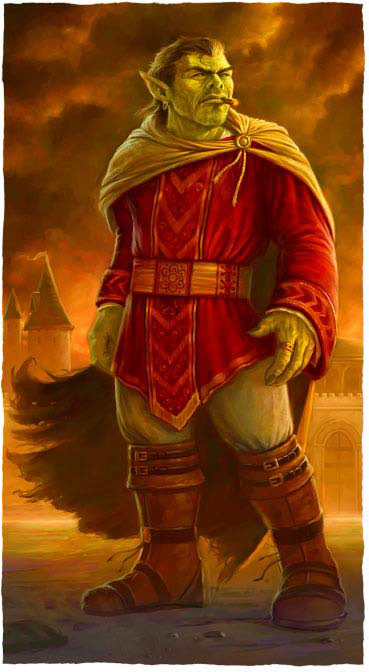TEE
There is darkness… And then you find yourself standing in a long hall of stone. Ten black-scaled reptilians stand guard upon another reptilian in robes who shouts, “Behold Serrek Tarn, the Acolyte of the Master! He who shall be your doom!”
Agnarr is beside you. He scoffs. “Only an acolyte? Hah!”
There is a shattering flash of prismed light, and when your vision clears the reptilians lie dead and Agnarr is laughing. You walk down the hall together and throw open the door at its end.
You’ve seen this before. You know what to expect: A room of gold and a door of ebony…
… but that’s not what you see. The door opens onto a large chamber. The ceiling is several dozen feet above you and the entire room is choked full of bramblous growth reaching to a height at least twice your own. Before you a path seems to have been hacked out of the dead or dying brambles. You step forward onto the path…
… and wake in chains.
AGNARR
There is darkness… and out of the darkness a chamber filled with shadows emerges. There are others around you. Your companions? You can’t tell. Their faces are veiled by the shadows and seemed blurred besides.
Before you, however, is the sarcophagus of a dwarven thane – his cold and stony features etched in profile atop it. On a narrow ledge before the sarcophagus lies a gleaming greatsword. Your hand reaches out, you grasp the blade. It fits your hands perfectly. You raise it aloft and a glorious shout erupts from your throat, “FOR THE GLORY!”
The blade bursts into blinding flame, the light spreads and fills the room…
… and you wake in chains.
ELESTRA
There is darkness… and then slowly, horrifically, the darkness fills with an unnamed dread. Your eyes are sightless and your ears hear no sound, and yet the certainty of horror ebbs into your very soul.
And then, suddenly, there is a light – impossibly bright; impossibly warm; impossibly soothing. The darkness is banished before it. And the light grows and grows and grows… And then it’s gone, but the darkness it leaves behind is merely the lack of light, not a manifested malevolence.
You open your eyes, and find yourself lying in a bank of snow upon the edge of a mountain. You can see for miles in every direction. The snow is chilling you, but there is a burning warmth in your left hand, which seems to be clenched about an object. Looking down and opening your hand, you find a mithril snake – the silver snake of Vehthyl; the serpent doubled. It seems to smolder, but is cooling rapidly.
You turn and see Dominic lying, much like yourself, in the snow. He, too, is holding the doubled serpent of Vehthyl. He looks up at you, and you see that his eyes are two glowing orbs of silver…
You wake in chains.
DOMINIC
There is darkness… and then slowly, horrifically, the darkness fills with an unnamed dread. Your eyes are sightless and your ears hear no sound, and yet the certainty of horror ebbs into your very soul.
And then, suddenly, there is a light – impossibly bright; impossibly warm; impossibly soothing. The darkness is banished before it. And the light grows and grows and grows… And then it’s gone, but the darkness it leaves behind is merely the lack of light, not a manifested malevolence.
You open your eyes, and find yourself lying in a bank of snow upon the edge of a mountain. You can see for miles in every direction. The snow is chilling you, but there is a burning warmth in your left hand, which seems to be clenched about an object. Looking down and opening your hand, you find a mithril snake – the silver snake of Vehthyl; the serpent doubled. It seems to smolder, but is cooling rapidly.
You turn and see Elestra lying, much like yourself, in the snow. She, too, is holding the doubled serpent of Vehthyl. She looks up at you, and you see that her eyes are two glowing orbs of silver…
You wake in chains.
















